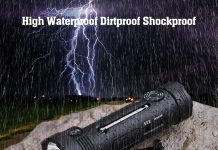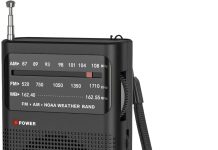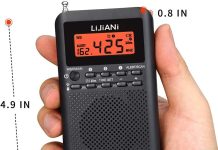Have you ever wondered how often tests are sent out over emergency weather radio? Well, you’re in luck! In this article, we will explore the frequency at which these tests are conducted and the importance of staying informed during severe weather events. Being aware of the testing schedule can help you ensure that your emergency weather radio is functioning properly and that you are prepared for any unexpected weather emergencies. So, let’s dive in and discover how frequently these tests occur!
Review contents
Importance of Emergency Weather Radio Testing
Ensuring Proper Functioning of Emergency Weather Radio
Emergency weather radios play a critical role in keeping the public informed and prepared during severe weather events. These radios provide timely and important alerts about incoming storms, tornadoes, hurricanes, and other hazardous conditions. However, for these radios to effectively serve their purpose, it is crucial to regularly test their functionality.
Testing emergency weather radios is essential to ensure that they are working properly and can deliver accurate and timely alerts when needed the most. These radios rely on various components, including antennas, receivers, and signal amplifiers, which can experience wear and tear over time. Regular testing helps identify any potential issues or malfunctions, allowing for timely repairs or replacements to maintain the radio’s effectiveness.
Keeping the Public Informed and Prepared
The primary objective of emergency weather radio testing is to ensure the public’s safety by providing them with up-to-date and reliable weather information. By conducting regular tests, emergency management agencies can verify that the radios are broadcasting alerts without any technical glitches or interruptions. This ensures that the public can receive critical warnings and instructions in a timely manner, helping them make informed decisions and take appropriate actions to protect themselves and their loved ones.
The importance of keeping the public informed and prepared cannot be overstated. Severe weather events can be unpredictable and potentially life-threatening. Regular testing of emergency weather radios instills confidence in the public, reassuring them that the alert system is functional and trustworthy. This fosters a culture of preparedness where individuals take the necessary precautions and heed the warnings issued through these radios.
Evaluating Alert System Performance
Reliable and effective alert systems are vital in emergency situations. Testing emergency weather radios allows emergency management agencies to assess the performance and effectiveness of the alert system. By analyzing the results of these tests, agencies can identify areas for improvement, whether it be enhancing the clarity of alerts or expanding coverage areas.
Regular evaluations help in identifying any shortcomings or limitations in the current system, allowing for necessary adjustments and improvements. It also enables agencies to determine the overall reach and penetration of the alerts, ensuring that they reach all communities, including those in remote or underserved areas.
Federal Communications Commission (FCC) Guidelines
Mandated Testing Frequency
To maintain the reliability and functionality of emergency weather radios, the Federal Communications Commission (FCC) has established guidelines for testing frequencies. These guidelines provide a framework for emergency management agencies to follow and ensure the consistent and systematic testing of these radios.
The FCC mandates that emergency weather radios should be tested at least once a week. This frequency allows for frequent and regular checks of the radio’s functionality and ensures that any issues or malfunctions are promptly addressed. Additionally, the FCC also recommends conducting monthly tests to evaluate the system’s overall performance and to identify any potential improvements or enhancements.
Testing Procedures and Protocols
In addition to specifying the testing frequency, the FCC also outlines the procedures and protocols that agencies should follow when conducting these tests. Agencies must adhere to these guidelines to ensure standardized testing practices and accurate evaluation of the alert system’s performance.
The testing procedures typically involve broadcasting a test message or tone through the emergency weather radio system. This message or tone is designed to simulate a real weather alert and should be clearly distinguishable from regular programming. By broadcasting these test messages, agencies can evaluate the audio quality, signal strength, and the overall reliability of the emergency weather radio system.
Furthermore, agencies are required to maintain detailed records of the testing activities, including the date, time, and results of the tests. These records serve as valuable documentation and may be reviewed by the FCC or other regulatory bodies to assess compliance with testing requirements.
Testing Frequency Variation Across Jurisdictions
Differences in Regional Policies
While the FCC provides guidelines for emergency weather radio testing, the specific testing frequencies can vary across jurisdictions. The variation in testing frequency is often driven by regional policies that take into account the unique weather patterns and hazards faced by different areas.
Regions prone to frequent severe weather events may choose to conduct more frequent tests, such as bi-weekly or even daily, to ensure the highest level of preparedness. On the other hand, regions with lower occurrence of severe weather may opt for less frequent tests while still maintaining compliance with FCC guidelines.
It is important for each jurisdiction to establish its testing frequency based on its own assessment of risk and the local weather conditions. This flexibility allows agencies to tailor their testing schedules to better address the specific needs and challenges of their communities.
Factors Affecting Testing Frequency
Several factors influence the determination of testing frequency. Firstly, the geographic location of the jurisdiction plays a significant role. Regions prone to hurricanes, tornadoes, or frequent severe weather events may require more frequent testing, as these weather phenomena can pose immediate and significant threats.
Secondly, population density is a crucial factor to consider. Areas with higher population densities may require more frequent testing to ensure that alerts reach all individuals in a timely manner. Conversely, sparsely populated areas may be able to conduct tests less frequently while maintaining adequate coverage for their smaller communities.
The availability of resources and personnel also affects the testing frequency. Jurisdictions with limited resources may face constraints in conducting frequent tests and may need to prioritize other preparedness measures. It is essential for agencies to strike a balance between testing frequency and other operational needs to ensure the optimal allocation of resources.
Local Emergency Management Practices
Collaboration with Local Weather Authorities
Effective emergency weather radio testing involves collaboration between emergency management agencies and local weather authorities. Local weather authorities possess specialized knowledge and expertise in meteorology, providing valuable insights and guidance for accurate and timely alert dissemination.
By collaborating with local weather authorities, emergency management agencies can ensure that the emergency weather radio system reflects the latest advancements in weather forecasting and utilizes the most accurate and reliable data sources. This collaboration allows for the integration of local forecasts and hazard assessments into the alert system, enhancing the system’s ability to provide tailored and targeted alerts to specific areas or communities.
Integration with Other Emergency Alert Systems
Emergency weather radios are just one component of a comprehensive emergency alert system. These radios need to be seamlessly integrated with other alert systems to ensure consistent and coordinated messaging during emergencies.
Coordinating the testing of emergency weather radios with other emergency alert systems, such as sirens, smartphone apps, and text message alerts, is crucial to maximize the effectiveness and reach of the overall alert system. This integration ensures that the public receives multiple avenues of communication, increasing the likelihood of receiving critical information during a severe weather event.
Feedback and Evaluation Mechanisms
To continuously improve emergency weather radio systems and testing practices, it is essential for agencies to establish feedback and evaluation mechanisms. These mechanisms allow the public to provide input on the effectiveness of the alerts and the overall performance of the system.
Agencies can solicit feedback from the public through surveys, focus groups, or public forums. This feedback serves as a valuable source of information to identify areas for improvement and make necessary adjustments to enhance the system’s functionality and usability.
In addition, agencies should conduct regular evaluations of their testing processes and protocols. This evaluation should include a thorough analysis of the test results, identification of any patterns or trends, and an assessment of the system’s overall performance. By systematically evaluating the test effectiveness, agencies can make informed decisions on potential modifications or enhancements to the testing procedures.
Technical Considerations for Radio Testing
Maximizing Coverage and Signal Strength
To ensure comprehensive coverage and optimal signal strength, emergency management agencies must consider the technical aspects of radio testing. This includes evaluating the placement and configuration of antennas, evaluating the infrastructure that supports radio transmission, and conducting periodic signal strength tests.
Antennas play a crucial role in transmitting radio signals, and their proper placement is vital for maximizing coverage. Agencies should strategically position antennas in areas with the highest population density and in locations that are least obstructed by physical barriers, such as tall buildings or dense vegetation.
Additionally, agencies should regularly evaluate the infrastructure that supports radio transmission, such as repeater systems or broadcast towers. These components should undergo routine maintenance to ensure their proper functioning and to prevent any potential interference or disruptions in signal transmission.
Conducting periodic signal strength tests is another technical consideration that agencies should prioritize. These tests measure the signal strength at various locations within the coverage area to identify any areas that may receive weak or inconsistent signals. By addressing these signal coverage gaps, agencies can improve the reliability and effectiveness of the emergency weather radio system.
Frequency Interference and Compatibility
Frequency interference and compatibility are important technical considerations that agencies must account for during radio testing. Emergency weather radios operate on specific frequency bands allocated by the FCC. It is crucial to ensure compatibility and avoid interference from other radio systems or electronic devices operating on the same or adjacent frequency bands.
Agencies should regularly monitor the electromagnetic spectrum in their respective jurisdictions to identify any potential sources of interference. In cases where interference is detected, appropriate measures should be taken to mitigate or eliminate the interference. This may involve adjusting the radio frequencies or implementing additional shielding or filtering mechanisms to improve signal quality.
Ensuring compatibility with other communication systems is also essential. Emergency weather radios should be capable of interoperating with other alert systems, such as the Emergency Alert System (EAS) or Wireless Emergency Alerts (WEA). Compatibility between these systems allows for seamless integration and coordinated messaging, ensuring that the public receives consistent and synchronized alerts across various platforms.
Incorporating Seasonal and Geographical Factors
Enhancing Testing during Severe Weather Seasons
Severe weather seasons, such as hurricane or tornado seasons, pose heightened risks and require increased preparedness measures. As such, emergency weather radio testing should be adapted to reflect the seasonal variations in severe weather and the associated risks.
During severe weather seasons, it is recommended to increase the frequency of testing to ensure that the emergency weather radio system is functioning optimally. By conducting additional tests during these high-risk periods, agencies can minimize the chances of any technical issues or failures when it matters the most.
Furthermore, agencies should prioritize the inclusion of relevant and timely information specific to the prevailing weather conditions during these seasons. This could include updates on storm tracks, evacuation routes, or shelter locations. Providing accurate and pertinent information through the emergency weather radio system enhances public preparedness and reduces the potential impact of severe weather events.
Adapting Testing to Local Climates and Hazards
Different regions face unique climates and hazards, necessitating adaptation of testing protocols to address these specific challenges. For example, areas prone to wildfires, floods, or winter storms may require specialized testing procedures or different frequency of tests.
Testing procedures should consider the specific hazards prevalent in the region and aim to simulate the conditions associated with these hazards. This ensures that the emergency weather radio system can effectively alert and communicate crucial information related to the local hazards, allowing residents to take appropriate actions to mitigate the risks.
Customizing testing protocols to address local climates and hazards is an important practice to ensure that the emergency weather radio system remains relevant and effective in each specific community.
Public Perception and Awareness
Public Education and Communication Efforts
Beyond the technical aspects of emergency weather radio testing, public perception and awareness play a significant role in the overall effectiveness of the alert system. Public education and communication efforts are essential in ensuring that the public understands the importance of the emergency weather radio system and remains engaged and receptive to the alerts.
Agencies should proactively engage in public education campaigns to raise awareness about the emergency weather radio system and its role in public safety. This can include distributing informational brochures or pamphlets, conducting educational workshops or seminars, and leveraging various communication channels, such as social media or community newsletters, to disseminate key messages.
Educating the public about the specific testing frequencies and procedures can also help address any misconceptions or misunderstandings. When the public is well-informed about the testing process, they are more likely to appreciate its significance and actively participate in emergency preparedness efforts.
Addressing Test Fatigue and Complacency
Frequent testing of emergency weather radios can sometimes lead to public complacency or test fatigue. Test fatigue refers to a state where individuals become desensitized to the alert sounds or messages, which may result in them ignoring or not taking the alerts seriously during real emergencies.
To address this issue, agencies should regularly communicate with the public about the importance of each test and its role in ensuring preparedness. By reminding the public about the potential risks and consequences of severe weather events, agencies can help maintain the public’s readiness and attentiveness, even during routine tests.
Additionally, agencies can consider varying the test scenarios to keep the public engaged and alert. Incorporating diverse test messages or varying the testing procedures can help prevent monotony and reinforce the importance of paying attention to the alerts.
Evaluation and Improvement of Test Effectiveness
Analyzing Test Results
Analyzing the results of emergency weather radio tests is a crucial step in evaluating the effectiveness of the alert system. Agencies should conduct thorough assessments of the test results to identify any patterns, trends, or areas of improvement.
During the analysis, agencies should review the response rates to the tests, assess the audio quality of the alerts, and analyze the reach and coverage of the alerts. By examining these factors, agencies can gain insights into how well the emergency weather radio system is performing and what areas may require adjustments or enhancements.
Agencies should also consider soliciting feedback from the public regarding their experience with the tests. Public feedback can provide valuable insights into the public’s perception of the alerts, the comprehensibility of the messages, and the overall effectiveness of the alert system. Incorporating public feedback into the analysis helps ensure that the evaluation process reflects the actual user experiences and perspectives.
Establishing Metrics for Evaluation
To facilitate consistent evaluation and improvement, agencies should establish metrics to assess the effectiveness of their emergency weather radio testing efforts. These metrics can include response rates, message comprehension rates, or geographical coverage rates.
By setting specific metrics and regularly tracking them, agencies can quantitatively measure the performance of the emergency weather radio system. This enables them to establish baseline measurements, monitor progress over time, and identify any areas that require additional attention or improvement.
Metrics also provide a means of benchmarking against industry standards or best practices. Comparing the agency’s performance with other jurisdictions or organizations can help identify areas for improvement and drive continuous enhancement of both the testing procedures and the emergency weather radio system itself.
Role of Volunteers in Radio Testing
Recruitment and Training of Radio Operators
Volunteers play a crucial role in the testing of emergency weather radios. The recruitment and training of dedicated radio operators ensure the smooth operation and execution of the testing procedures.
Agencies should actively recruit and train volunteers to assist with radio testing activities. These volunteers can be community members with an interest in emergency preparedness or those with technical expertise in radio communications. By involving volunteers, agencies can enhance their testing capabilities, expand their reach within the community, and strengthen the overall resilience of the emergency weather radio system.
Training programs should be implemented to equip volunteers with the necessary knowledge and skills to effectively operate the emergency weather radio system. This includes understanding the testing procedures, troubleshooting common issues, and ensuring compliance with relevant FCC guidelines. Well-trained volunteers can help maintain consistency, accuracy, and efficiency during the testing process.
Coordinating Efforts with Emergency Management Agencies
Collaboration and coordination between volunteers and emergency management agencies are essential for successful emergency weather radio testing. Agencies should establish clear communication channels and workflows for volunteers to report test results and provide feedback.
Regular meetings or training sessions between agency staff and volunteers facilitate open dialogue and ensure that volunteers have a comprehensive understanding of their roles and responsibilities. This coordination allows agencies to leverage the expertise and commitment of volunteers, maximizing the impact of the testing efforts and improving the overall effectiveness of the emergency weather radio system.
Volunteers also serve as important advocates within the community, helping to raise awareness about the emergency weather radio system and reinforcing the importance of preparedness. Their involvement fosters a sense of community participation and ownership, ultimately enhancing the overall resilience and effectiveness of the alert system.
Collaborative Research and Development
Continuous Improvement of Alert Systems
Emergency weather radio systems are constantly evolving as new technologies and practices emerge. To ensure their continuous improvement, agencies should actively engage in collaborative research and development initiatives.
Collaborative research allows agencies to share knowledge, insights, and best practices with other jurisdictions and organizations. By leveraging collective expertise, agencies can stay informed about the latest advancements in alert systems, testing methodologies, and emerging technologies, ultimately enhancing their own testing practices.
Additionally, collaborative research efforts can facilitate the development and implementation of innovative solutions to common challenges faced by emergency weather radio systems. This includes exploring new communication channels, integrating artificial intelligence or machine learning technologies, or enhancing the interoperability with other alert systems. By fostering collaboration, agencies can collectively work towards elevating the standards and capabilities of emergency weather radio systems across the board.
Sharing Best Practices and Innovations
Sharing best practices and innovations is an important aspect of collaborative research and development. Agencies should actively participate in forums, conferences, and working groups to exchange ideas and lessons learned with their peers.
These knowledge-sharing platforms provide opportunities for agencies to showcase successful testing strategies, share lessons learned from past experiences, and reflect on areas of improvement. By engaging in these collaborative initiatives, agencies can benefit from the collective wisdom of the emergency management community, driving continuous improvement and innovation in the field of emergency weather radio testing.
Moreover, agencies should actively seek partnerships with industry stakeholders, such as radio manufacturers, software developers, or telecommunications companies. Collaborating with these entities can lead to the development of new technologies, tools, or methodologies that improve the effectiveness and efficiency of emergency weather radio testing.
In conclusion, emergency weather radio testing is of paramount importance in ensuring the proper functioning of alert systems, keeping the public informed and prepared, and evaluating their performance. By adhering to FCC guidelines, considering regional policies, collaborating with local weather authorities, and incorporating technical considerations, agencies can create effective and reliable emergency weather radio systems. Public perception and awareness, evaluation of test effectiveness, the role of volunteers, and collaborative research and development efforts also contribute to the continuous improvement and innovation of these systems. The comprehensive testing of emergency weather radios ultimately enhances the overall resilience and preparedness of communities in the face of severe weather events.




























